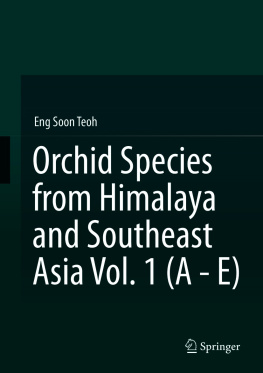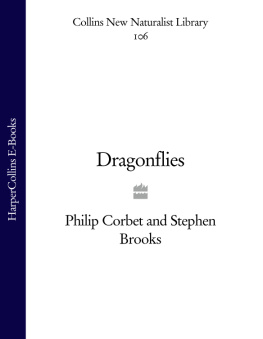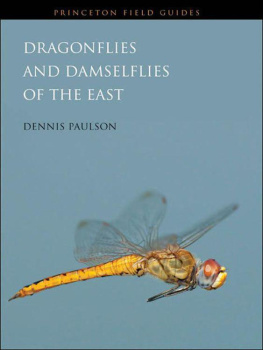Dragonfly Genera of the New World
An illustrated and annotated key to the Anisoptera
the New World
Annotated Key to the Anisoptera
Rosser W. Garrison,
Natalia von Ellenrieder, and
Jerry A. Louton

2006 The Johns Hopkins University Press
All rights reserved. Published 2006
Printed in the United States of America on acid-free paper
9 8 7 6 5 4 3 2 1 The Johns Hopkins University Press
2715 North Charles Street
Baltimore, Maryland 21218-4363
www.press.jhu.edu Library of the Congress Cataloging-in Publication Data Garrison, Rosser W.
Dragonfly Genera of the New World: an illustrated and annotated key to the Anisoptera/Rosser, W. Garrison, Natalia von Ellenrieder, Jerry A. paper)
1. paper)
1.
Dragonflies North America Classification. 2. Dragonflies South America Classification. I. Ellenrieder, Natalia von. II.
Louton, Jerry A. III. Title.
QL520.2.A1G37 2006
595.733097dc22 2006041810 A catalog record for this book is available from the British Library Title page illustration Stylurus plagiatus (Gomphidae) male by R.W. Garrison. Front cover above: Erythemis peruviana (Libellulinae) male photographed by R.W. Garrison in Venezuela, Ro Caroni; below: Fylgia amazonica (Libellulinae) male photographed by R.W.
Garrison in Brazil, Rondnia State To our families, friends, and all dragonfly lovers
Contents
Preface
During the past 30 years, dragonflies and damselflies (Order Odonata) have become one of the most studied groups of insects. Their relatively large size, striking coloration, interesting biology, and relative fewness in numbers of species (about 5,600 species) compared with other orders of insects are factors contributing to their popularity. Dragonfly larvae generally have high habitat fidelity, and can thus be used as indicators of the health of aquatic ecosystems. Adults are uually active only during daylight hours and may be collected by aerial netting. Despite their popularity, there has virtually been no means of easily identifying species from the richest area of biodiversity: the neotropical region. This area houses about 1,650 species in 195 genera, or about 30% of the worlds total (Garrison, 1991; Bridges, 1994; Tsuda, 2000).
The closest areas in number of species are continental Southeast Asia with 959 species and Indonesia with 673 species (Tsuda, 2000). Within the past eight years a comprehensive account of the Odonata from the United States and Canada has been published (Westfall and May, 1996; Needham, Westfall, and May, 2000), resulting in an increase in interest by students and the general public. In contrast, for Mexico and Central America there are only the less comprehensive keys of Calvert (19051908) and a modified, up-to-date volume (Frster, 2001) for Central America, and nothing equivalent has ever been published for the vast South American continent. A significant amount of research in the neotropical Odonata by Latin American students has only occurred during the past fifteen to twenty years. However, all students of the order have had to rely on scattered publications that treat regional fauna or review particular groups of Odonata, or have access to a synoptic collection in order to successfully identify material. It is surprising that such a small and well-known order of insects has lagged behind others as regards taxonomic knowledge, as is the case in South America.
This is most likely due to the few numbers of active researchers in the past as well as to the paucity of material in collections; odonates are fragile and, except for a few groups such as the magnificent helicopter damselflies (Pseudostigmatidae), are not attractive to the general collector since preserved material often undergoes significant postmortem discoloration. Because there is no comprehensive treatment allowing for the identification of neotropical dragonflies, an illustrated key should greatly facilitate and accelerate taxonomic and ecological studies of the order in this rich geographic region. We believe that this book will be a reliable reference source for identification of dragonflies for limnologists, ecologists, and other biologists relatively unfamiliar with these insects, and will encourage Latin American workers to study their dragonfly faunas. This work attempts to provide keys to adults, supported by abundant illustrations, to genera of dragonflies (suborder Anisoptera) from anywhere in the New World. We are well aware that our goal of allowing the nonspecialists or those little familiar with entomology to properly place specimens correctly to genus using our keys will not always be realized. Future studies of vastly unexplored areas, especially in South America, will augment species and genera rendering our keys out-of-date.
Still, our book should allow biologists to determine the existence of undescribed taxa by comparison with the keys, illustrations, and references to literature, which would otherwise not be possible. All the keys produced for this book using the DELTA program are open-ended and should allow for the inclusion of newly described genera. Almost all illustrations and wing scans are from preserved material we have personally examined. Readers will find a strong bias in supportive illustrations toward the Meso- and South American fauna. Because of the relative disparity between the knowledge of North American versus Meso- and South American faunas, we have felt justified in concentrating our efforts on the less known neotropical region. We have steered a conservative course with regard to recognition of families and genera.
Several authors (Carle, 1982a, 1986, 1995; Bechly, 1996; Lohmann, 1996; Jarzembowski and Nel, 1996; Trueman, 1996; von Ellenrieder, 2002), based on phylogenetic analyses, have shown the existing classification of the order to be partially artificial, and some of them have proposed new and in some cases radical reclassifications. However, phylogenetic relationships within the order are not yet fully resolved, and further research will most likely help build stronger hypotheses of relationships reflecting a natural classification. Since our purpose in this book is the identification of taxa, we have refrained from deviating from most of the currently recognized families and genera, although we provide references and comments regarding phylogenetic relationships of genera when known. Although we provide brief summaries and references on habits and other aspects of biology for each genus, we have refrained from including sections on the general biology and ecology of Odonata in this volume. A standard reference for this is Tillyard (1917), and the up-dated and thorough volume by Corbet (1999), as well as a shorter but very good reference by Miller (1995), will provide the interested student with information on the biology of Odonata in general. No effort was spared in trying to examine as many species as possible for every described genus.
To this end, we have received invaluable help from many of our colleagues and institutions who have assisted us with needed specimens, literature, and advice. Chief among those are Drs. Janira M. Costa, Frederico A. Lencioni, Jrg De Marmels, Enrique Gonzlez-Soriano, Rodolfo Novelo-Gutirrez, Carlos Esquivel, Javier Muzn, Dennis R. Paulson, Michael L.
May, Thomas W. Donnelly, Oliver S. Flint, Jr., Mark OBrian, William J. Mauffray, Kenneth J. Tennessen, Jerrell J. Daigle, Sidney W.
Dunkle, Andrew C. Rehn, Richard Hoebecke, Jrme Constant, Stephen Brooks, and David Goodger. We are deeply indebted to Drs. Dennis R. Paulson, Sidney W. Dunkle, Kenneth J.
Tennessen, and Jrg De Marmels for their valuable comments on the manuscript and to Dennis R. Paulson for his generous sharing of unpublished information. We thank the Smithsonian Institution for providing RWG and NVE a travel grant to make this study more complete.
Next page





 2006 The Johns Hopkins University Press
2006 The Johns Hopkins University Press